Ditapis dengan

Diagnosis and Treatment of Radiations Injuries
The main purpose of this report is to assist physicians involved in the early medical handling of radiation victims to apply prompt diagnostic measures and emergency treatment. Special emphasis is given to localized radiation injuries, which are the most frequently occurring direct health effects observed from ionizing radiation. The lessons learned from the accidents at Chernobyl (Ukraine, 198…
- Edisi
- -
- ISBN/ISSN
- 9201004982 / 10206450
- Deskripsi Fisik
- 49 p. : illus. ; 24 cm
- Judul Seri
- Safety Reports Series No. 2
- No. Panggil
- 616.28 IAE d
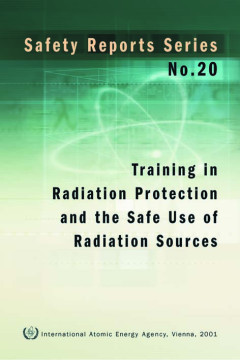
Training in Radiation Protection and the Safe Use of Radiation Sources
This report provides assistance in how to organize adequate and appropriate training for personnel working with ionizing radiation. It is primarily intended to be used by trainers and training providers, and covers among other topics the various methods of training provision and gives advice on the development and organizational aspects associated with the management of training activities. It …
- Edisi
- -
- ISBN/ISSN
- 9201006012/10206450
- Deskripsi Fisik
- 69 p. : Illus. ; 24 cm
- Judul Seri
- Safety Reports Series No. 20
- No. Panggil
- -

The Safe Management of Sources of Radiation: Principles and Strategies
This INSAG report deals with the general principles governing the safety of all sources of radiation and with the application of these principles. It seeks to demonstrate that, at the conceptual level, the distinction traditionally made between nuclear safety and radiation protection is not justified. This report is primarily intended for the non-specialist who needs to take decisions about the…
- Edisi
- -
- ISBN/ISSN
- 9201021992 / 10252169
- Deskripsi Fisik
- 27 p. : Illus. 24 cm
- Judul Seri
- INSAG-11
- No. Panggil
- 539.2 IAE s
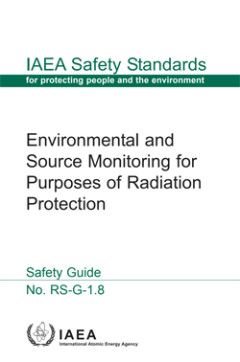
Environmental and Source Monitoring for Purposes of Radiation Protection, Saf…
The purpose of this Safety Guide is to provide international guidance, coherent with contemporary radiation protection principles and IAEA safety requirements, on the strategy of monitoring in relation to: (a) control of radionuclide discharges under practice conditions, and (b) intervention, such as in cases of nuclear or radiological emergencies or past contamination of areas with long lived …
- Edisi
- -
- ISBN/ISSN
- 9201134045 / 1020525X
- Deskripsi Fisik
- 119 p. : Illus. ; 24 cm
- Judul Seri
- Safety Standards No. RS-G-1.8
- No. Panggil
- -
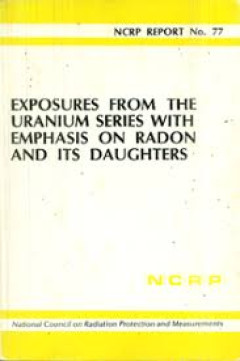
Exposures from the Uranium Series with Emphasis on Radon and its Daughters
Report No. 77 considers and evaluates potential exposures from the radionuclides of the uranium series with emphasis on radon and its daughters. The Report examines, on the basis of available information, the sources of radon, the levels of exposure and their probable distribution, and estimates the risks attributable to these exposures. The Report concludes that while information on levels and…
- Edisi
- -
- ISBN/ISSN
- 0913392677
- Deskripsi Fisik
- 131 p. : Illus. ; 23 cm
- Judul Seri
- NCRP Report No. 77
- No. Panggil
- 363.1 NCR e

Radiation Protection and Dosimetry: An Introduction to Health Physics
This comprehensive text provides an overview of all relevant topics in the field of radiation protection (health physics). Radiation Protection and Dosimetry serves as an essential handbook for practicing health physics professionals, and is also ideal as a teaching text for courses at the university level. The book is organized to introduce the reader to basic principles of radiation decay and…
- Edisi
- -
- ISBN/ISSN
- 9780387499826
- Deskripsi Fisik
- 378 p, : illus. ; 26 cm
- Judul Seri
- -
- No. Panggil
- 616.075 STA r
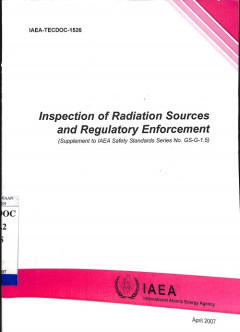
Inspection of Radiation Sources and Regulatory Enforcement (Supplement to IAE…
This book consist : Introduction; Objective of inspection and enforcemet; Organization and management of inspections; and Organization and management of the enforcement process. (Jml)
- Edisi
- -
- ISBN/ISSN
- 9201131062 / 10114289
- Deskripsi Fisik
- 131 p. : Illus. ; 29 cm
- Judul Seri
- IAEA-TECDOC-1526
- No. Panggil
- 539.2 IAE i
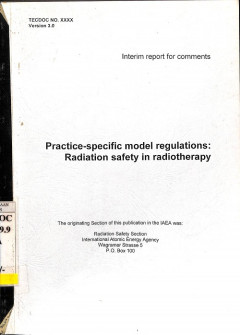
Practice-Specific Model Regulations: Radiation Safety in Radiotherapy
This book consist : Foreword; Principal requirements; Safety of sources; Occupational exposure; Medical exposure; Public exposure; Potential exposure, mitigation and emergency plans; and Safety in the transport of radioactive materials. (Jml)
- Edisi
- -
- ISBN/ISSN
- -
- Deskripsi Fisik
- 84 p. : Illus. ; 29 cm
- Judul Seri
- TECDOC No. XXXX (Version 3)
- No. Panggil
- 363.1799 IAE p

Practice-Specific Model in Industrial Radiography (Working Material)
This book consist : Introduction; Principal requirements; Individual monitoring of workers; Workplace monitoring; Security of radiation sources; Requirements for industrial radiography equipment; Requirements for shielded enclosures; Requirements for site radiography; Transport of radioactive sources; and Emergency planning and preparedness. (Jml)
- Edisi
- -
- ISBN/ISSN
- -
- Deskripsi Fisik
- 73 p. : Illus. ; 29 cm
- Judul Seri
- DRAFT-IAEA-TECDOC-XXXX (5 June 2001)
- No. Panggil
- 363.1799 IAE p
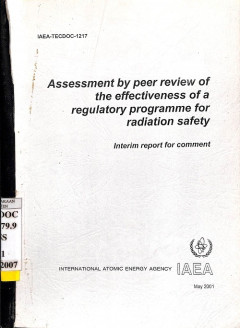
Assessment by Peer Review of the Effectiveness of a Regulatory Programme for …
This book consist : Introduction; The regulatory programme and the status of its development; Guidance to review team members on the preparation and conduct of an assessment and reporting of findigs; Methodology to assess the effectiveness of the regulatory programme; and Characterization of the assessment findings. (Jml)
- Edisi
- -
- ISBN/ISSN
- 10114289
- Deskripsi Fisik
- 41 p. : Illus. ; 29 cm
- Judul Seri
- IAEA-TECDOC-1217
- No. Panggil
- 363.1799 IAE a
 Karya Umum
Karya Umum  Filsafat
Filsafat  Agama
Agama  Ilmu-ilmu Sosial
Ilmu-ilmu Sosial  Bahasa
Bahasa  Ilmu-ilmu Murni
Ilmu-ilmu Murni  Ilmu-ilmu Terapan
Ilmu-ilmu Terapan  Kesenian, Hiburan, dan Olahraga
Kesenian, Hiburan, dan Olahraga  Kesusastraan
Kesusastraan  Geografi dan Sejarah
Geografi dan Sejarah